TL;DR: Hornet speaks, Pharloom breathes, and Silksong soars. This isn’t just Hollow Knight 2. This is the new gold standard for Metroidvanias.
Hollow Knight: Silksong
There are few games that have lived rent-free in my head for as long as Hollow Knight: Silksong. The wait was biblical. The memes were relentless. At some point, the idea of Silksong became more cultural myth than actual game—a Schrödinger’s sequel, existing only in Nintendo Direct bingo cards and cruel indie showcases. And yet here we are. It’s real, it’s playable, and after dozens of hours spent weaving my way through Pharloom’s spires, caverns, and haunted villages, I can say it plainly: Silksong is worth every year we spent waiting.
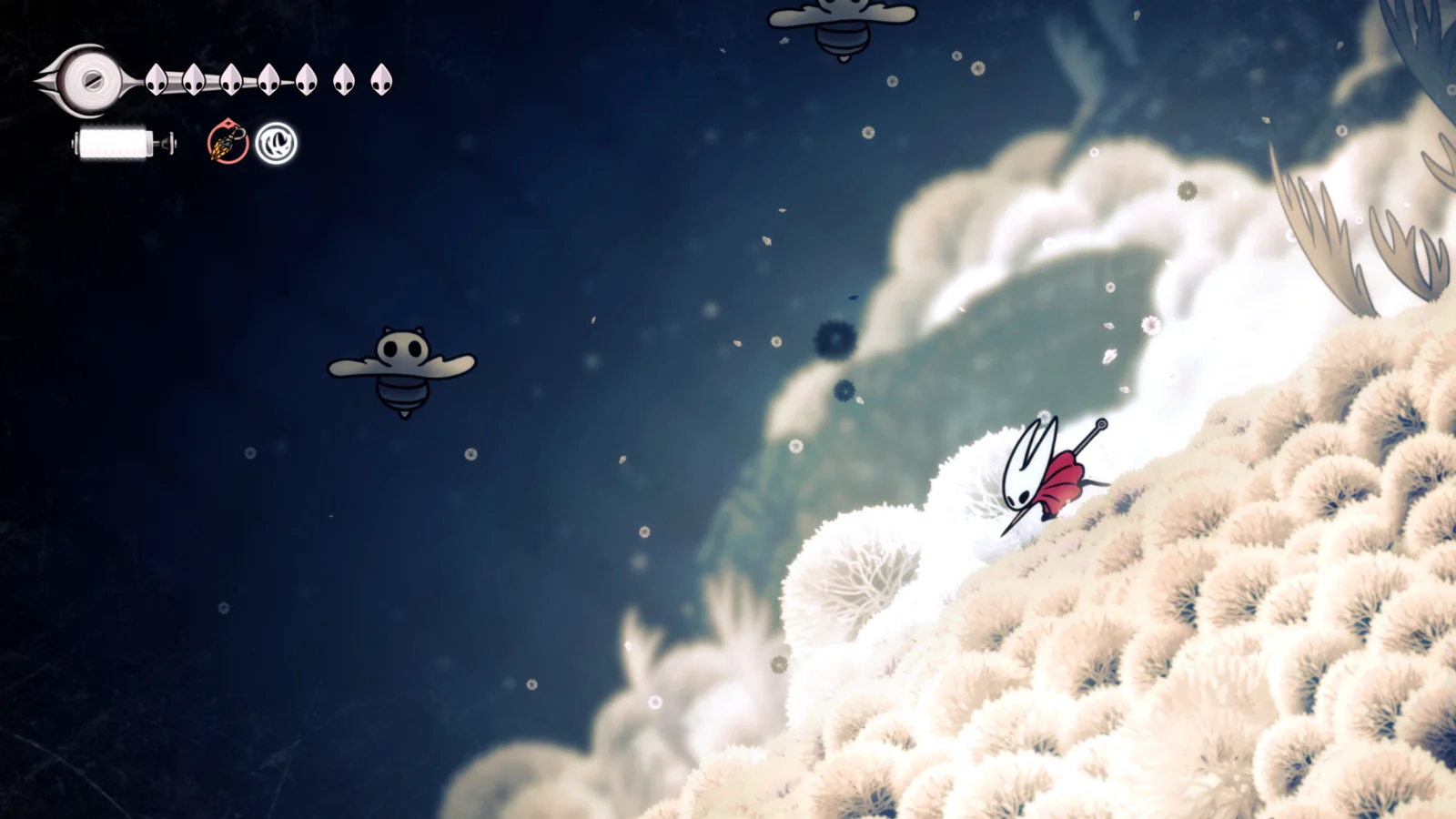
Where Hollow Knight felt like stumbling into a crumbling cathedral, Silksong feels like ascending into a perilous, unfamiliar kingdom mid-collapse. The beauty is still there, but it’s sharper now, wrapped in barbed wire. Pharloom is alive in a way Hallownest wasn’t—its people cling to their own traditions, its factions jostle for power, its ruins are vibrant with decay. And at the heart of it all is Hornet, needle in hand, determined to cut her way through destiny.
Hornet: A Hero Who Speaks
Hornet is everything the Knight wasn’t: sharp-tongued, wry, confident, but still cloaked in mystery. The decision to give her a voice could have shattered the fragile tone Team Cherry cultivated, but it doesn’t. It reshapes it. Conversations in Silksong feel purposeful rather than cryptic for cryptic’s sake. Hornet’s words push against the world, and in turn, Pharloom pushes back. She’s still solitary, still stoic, but her personality makes the stakes feel more personal. Where Hollow Knight was about unearthing secrets, Silksong is about navigating responsibility.
Pharloom: A Kingdom in Motion
Exploration is once again the soul of the experience, but Pharloom has a different flavor than Hallownest. It’s vertical, daunting, less like wandering through ruins and more like scaling a hostile tower-city. Every zone is distinct: fungal expanses where spores choke the air, glassy sanctuaries drenched in pale light, brutalist fortresses patrolled by zealots. Reviews across the board highlight the sheer density of secrets and side paths, and I can confirm: every corner whispers temptation. Just when you think you’re ready to move on, Pharloom dares you to stay a little longer.
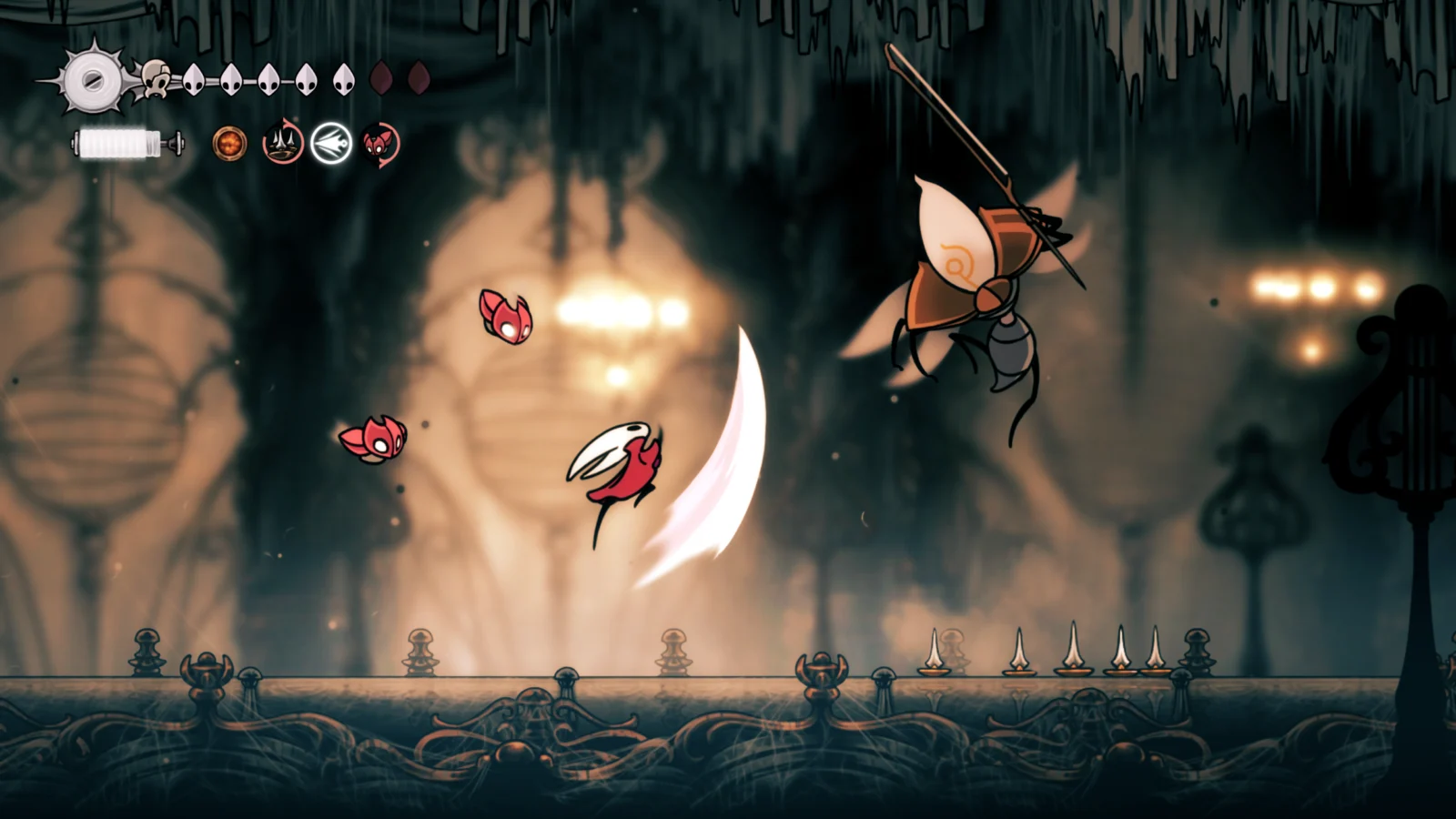
Combat: Faster, Sharper, Meaner
Hornet’s needle and thread are revelations compared to the Knight’s nail. She’s faster, more acrobatic, more improvisational. The silk meter changes everything: it fuels both healing and mobility, which means you’re always deciding whether to use your precious resources to mend or to escape. The new secondary weapons and crests take that tension further, letting you lean into specific playstyles. Throwing daggers, spinning chains, charms that warp how you engage—it’s a playground for experimentation.
And combat is harder. Not just tougher bosses, though they are spectacular—multi-phase duels against titanic foes that demand absolute focus—but even the basic enemies force you to respect them. Every death feels earned. Every victory feels like triumph carved out of struggle. Critics have been right to point out that Silksong feels more punishing than Hollow Knight, but also more generous. You have tools. You have options. You just need the skill to wield them.
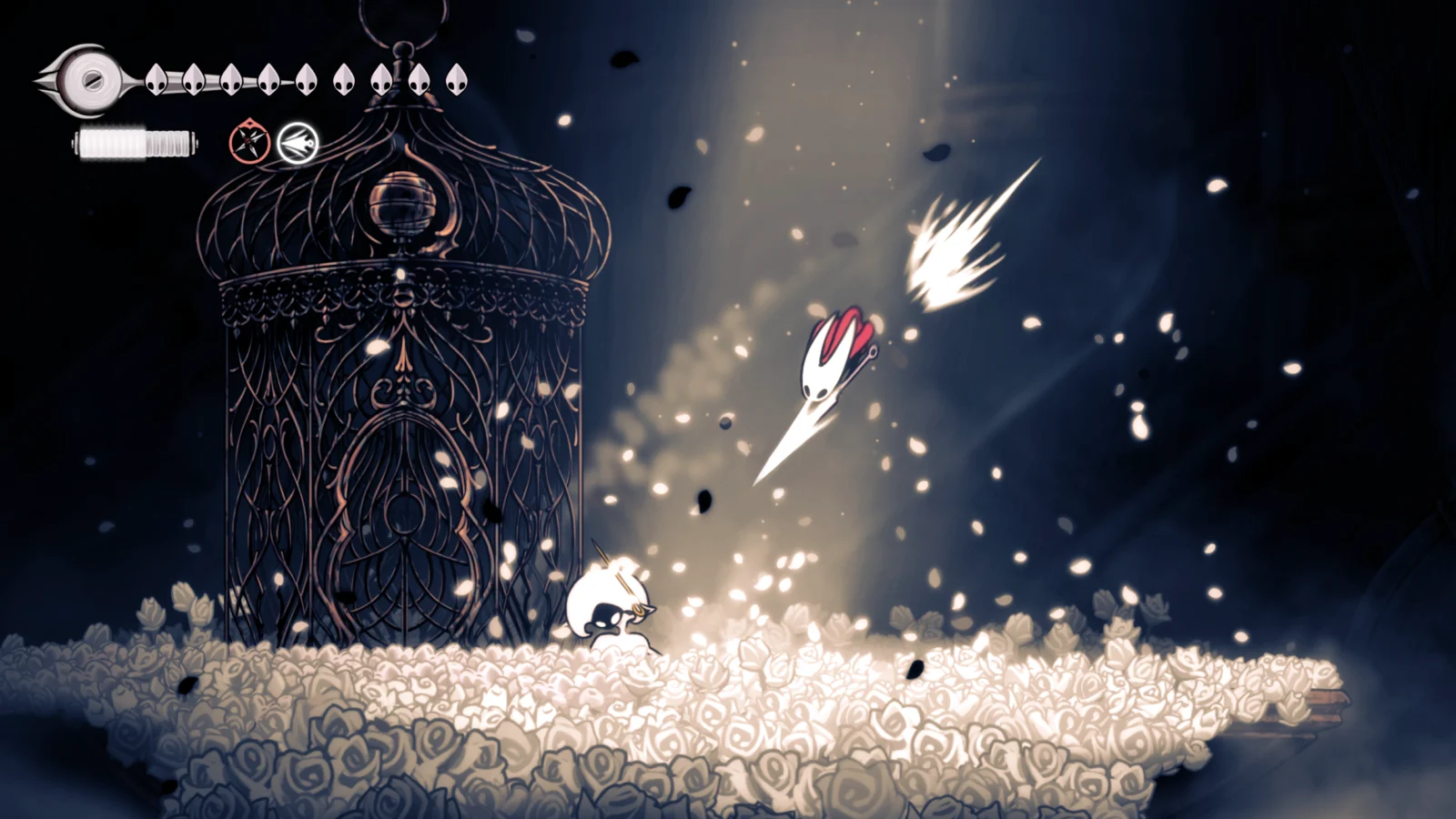
The Sting of Death and the Grace of Mercy
Silksong tweaks the corpse run system in ways that make it less frustrating. Rosaries drop on death, but stashing, protective charms, and alternate resources mean that one mistake won’t bankrupt hours of progress. It’s still tense, still risky, but rarely cruel. This balance is what makes Silksong sing: it demands respect without breaking you.
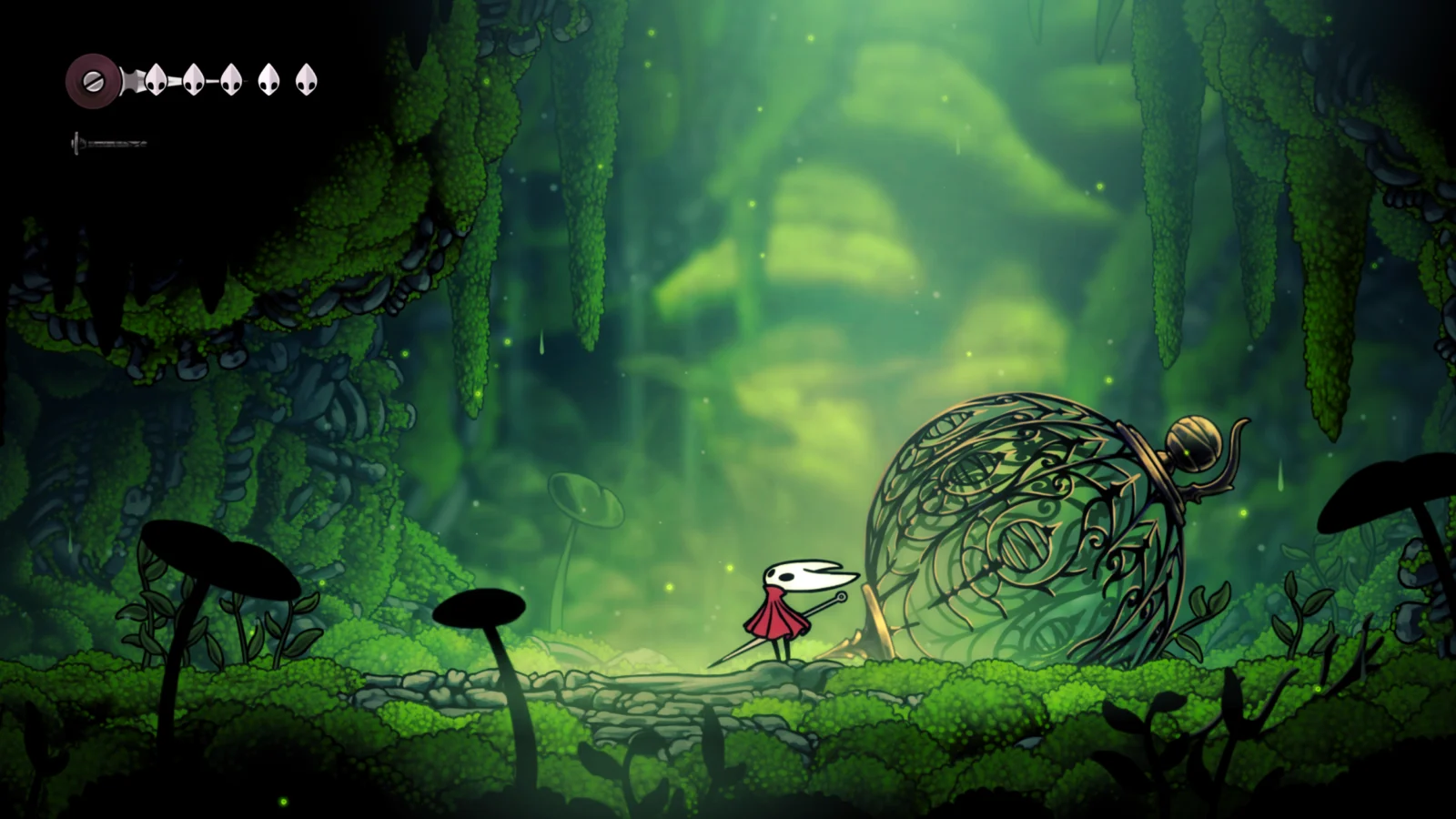
Writing and Characters
If you loved Hollow Knight’s eccentric, haunting cast, you’ll adore Silksong’s expanded menagerie. From zealots singing dirges in ruined chapels to smug merchants who can’t believe you survived long enough to shop, every character feels etched in with the same lyrical weirdness. The writing once again strikes that impossible tone: poetic but playful, melancholy but never dour. Reviews have singled out the pilgrim who serenades a locked door—only to take credit when you open it with a lever—as a highlight. That mix of pathos and absurdity is everywhere, and it keeps Pharloom from ever feeling one-note.
Music That Cuts Deep
Christopher Larkin outdoes himself. Where Hollow Knight’s score mourned, Silksong’s yearns. Strings swell like silk threads pulled taut, melodies linger like ghostly whispers. The soundtrack doesn’t just underscore exploration—it transforms it. There were moments I stopped moving, just to let a violin line wash over me. This isn’t background music; it’s narrative in sound.

Size, Scope, and the Long Haul
Silksong is huge. The achievement for a 100% speedrun in under 30 hours hints at its true scale, but even outside completionist goals, the world feels endless. Dozens of bosses, branching storylines, optional quests that take you into forgotten corners—this isn’t just “more Hollow Knight.” It’s bigger, denser, sharper. Other reviewers have called it a refinement rather than a reinvention, and that feels exactly right. Team Cherry didn’t tear down the foundation—they built higher, stranger, and more intricate atop it.
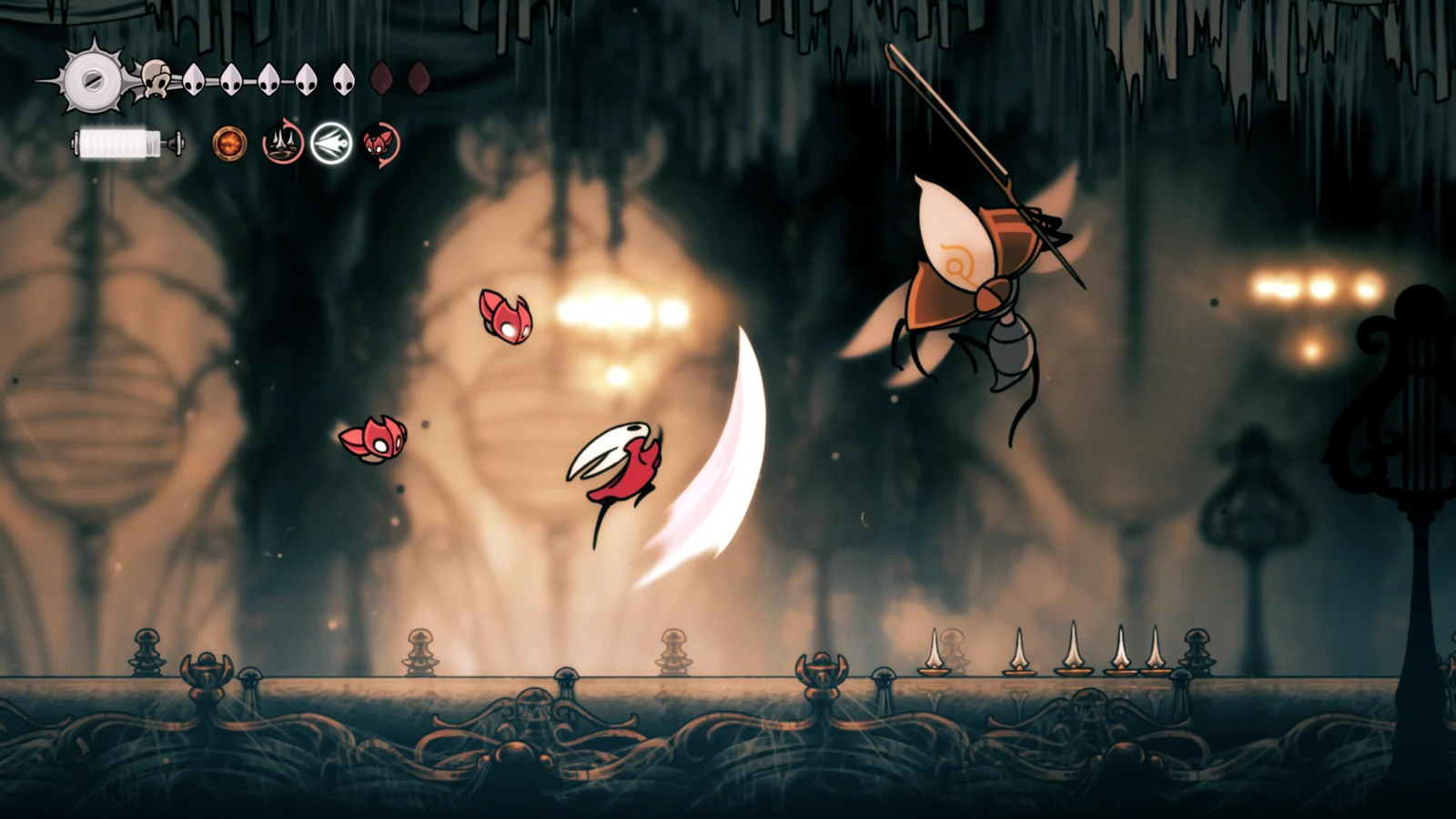
The Verdict
Hollow Knight: Silksong is a masterpiece. It’s everything a sequel should be: a game that honors its predecessor while daring to be bolder, sharper, and stranger. Hornet is a protagonist worth waiting for, Pharloom is a kingdom worth losing yourself in, and every moment hums with the same obsessive attention to detail that made Hollow Knight legendary. It is harder, yes. Stranger, certainly. But it’s also richer. It sings.
Silksong doesn’t just live up to Hollow Knight—it eclipses it. Bigger, faster, more flexible, and more narratively grounded, it cements Team Cherry as masters of the genre. The wait was long, but what we’ve received isn’t just a game. It’s a gift.







